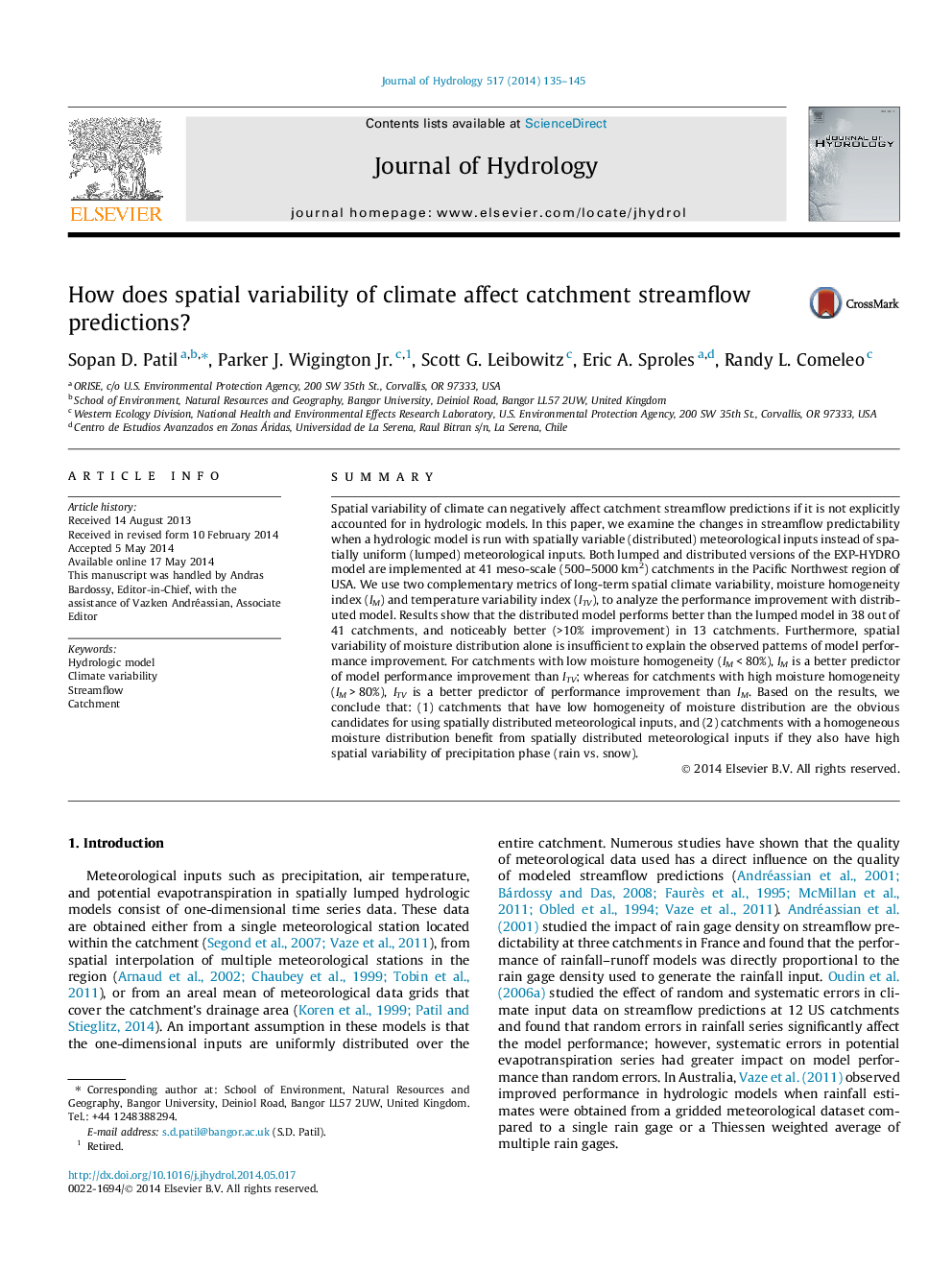| Article ID | Journal | Published Year | Pages | File Type |
|---|---|---|---|---|
| 6412905 | Journal of Hydrology | 2014 | 11 Pages |
â¢We compare lumped and distributed hydrologic models at 41 catchments in northwest USA.â¢Distributed model performs better in catchments with low moisture homogeneity.â¢Spatial variability of precipitation phase is important in homogenous catchments.
SummarySpatial variability of climate can negatively affect catchment streamflow predictions if it is not explicitly accounted for in hydrologic models. In this paper, we examine the changes in streamflow predictability when a hydrologic model is run with spatially variable (distributed) meteorological inputs instead of spatially uniform (lumped) meteorological inputs. Both lumped and distributed versions of the EXP-HYDRO model are implemented at 41 meso-scale (500-5000Â km2) catchments in the Pacific Northwest region of USA. We use two complementary metrics of long-term spatial climate variability, moisture homogeneity index (IM) and temperature variability index (ITV), to analyze the performance improvement with distributed model. Results show that the distributed model performs better than the lumped model in 38 out of 41 catchments, and noticeably better (>10% improvement) in 13 catchments. Furthermore, spatial variability of moisture distribution alone is insufficient to explain the observed patterns of model performance improvement. For catchments with low moisture homogeneity (IMÂ <Â 80%), IM is a better predictor of model performance improvement than ITV; whereas for catchments with high moisture homogeneity (IMÂ >Â 80%), ITV is a better predictor of performance improvement than IM. Based on the results, we conclude that: (1) catchments that have low homogeneity of moisture distribution are the obvious candidates for using spatially distributed meteorological inputs, and (2) catchments with a homogeneous moisture distribution benefit from spatially distributed meteorological inputs if they also have high spatial variability of precipitation phase (rain vs. snow).
